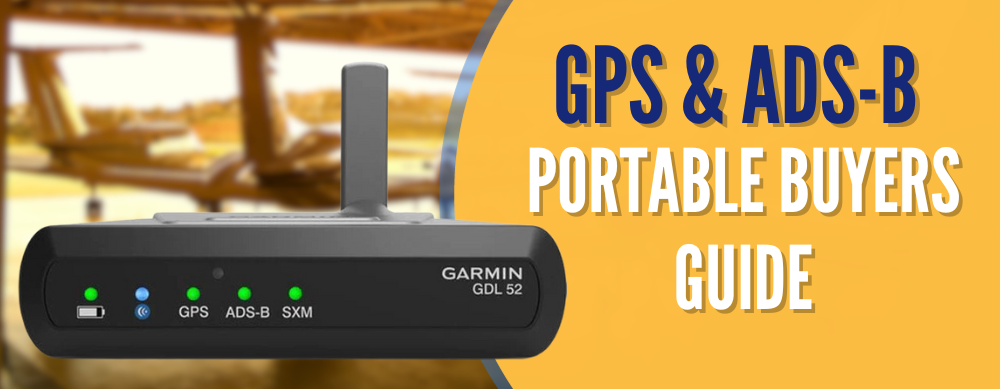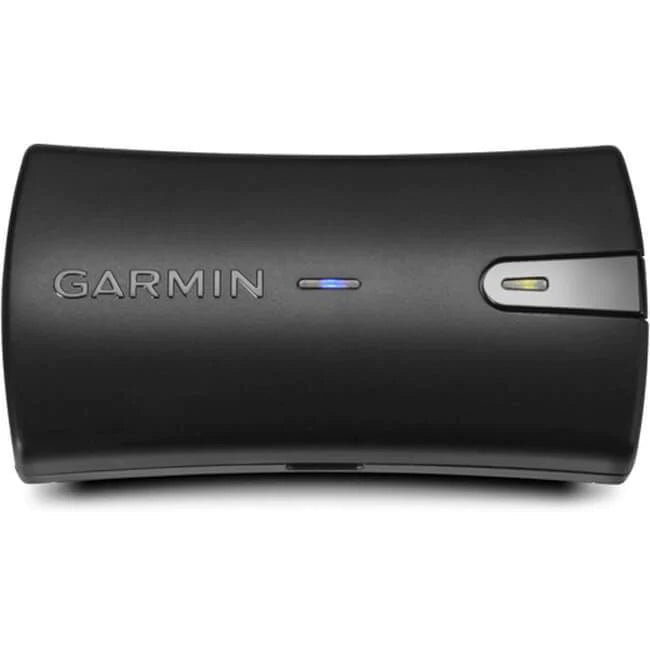GPS & ADS-B Portable Buyers Guide

Featured Pilot Gear
Browse our selection of high-quality pilot supplies! Your purchase directly supports our small business and helps us continue sharing valuable aviation content.
Is your cockpit ready for the FAA's NextGen air traffic control system? Getting real-time traffic information and current weather information used to cost thousands in equipment and subscription costs just a few years ago.
Now, you just need a tablet and a small receiver for your glare shield.
Table of Contents
 Does a Portable ADS-B Device Meet FAA Requirements?
Does a Portable ADS-B Device Meet FAA Requirements?
These compact, feature-packed tools won't satisfy the FAA's requirements for planes to be "ADS-B Out" capable, but they do let you take advantage of the FAA's free traffic and weather information right now.
You just pay for the receiver once, and there are no ongoing subscription or database fees (unless the flight planning app you already use has a subscription fee).
 What is ADS-B?
What is ADS-B?
ADS-B stands for automatic dependent surveillance-broadcast, and it's the technology that will eventually replace air traffic control radar in the United States.
How ADS-B Works
How does ADS-B work? Well, planes with ADS-B use GPS receivers to regularly broadcast their exact position, speed, and other important data to the FAA's network of ground stations. Those ground stations beam back up information about every other airplane in the sky near yours. They also upload weather radar images, METARs, TAFs and other weather information that a cockpit MFD or your tablet can display.
With ADS-B, pilots and air traffic controllers have an accurate view of their surroundings. Not only that, but these ground stations also share essential weather updates, keeping pilots informed about any potential weather hazards during flight.
Say goodbye to traditional radar systems—ADS-B offers more precise and comprehensive tracking capabilities for enhanced safety in the airspace. No wonder the FAA made its usage a requirement!
ADS-B Out Usage
At present all commercial airliners and private jets have ADS-B Out installed to meet the FAA requirement, but many older general aviation planes do not.
If you're looking for a comprehensive traffic solution, consider pairing one of these units with a second traffic alert unit that can receive Mode C transponder signals from nearby aircraft.
If you're ready to make the leap, take a look at these units:
Garmin GDL Series
Pay for it once, then get all the real-time traffic and weather data you can handle on Garmin's line of the best portable aviation GPS units, or on a variety of iOS and Android tablets. The GDL series provides WAAS-accurate GPS and GLONASS position data and ADS-B.
It'll work with many Apple and Android tablets using the Garmin Pilot app - but it's not compatible with any other navigation apps, like ForeFlight or WingX.
Three versions are available. GDL 50 portable GPS & ADS-B In receiver, GDL 52 that offers GPS, both ADS-B In and Sirius XM, and the GDL 51 which offers portable GPS and Sirius XM weather, but no ADS-B In.
- Dimensions: 4.9" x 1.3" x 3.4" (12.44 x 3.30 x 8.64 cm)
- Battery Life: Lithium-ion rechargeable (built-in)
- Connection Type: 18-pin power and data connector, microUSB, ADS-B MCX antenna port, GPS MCX antenna port, Wireless Connext™ (Bluetooth®)
- Compatible With: Garmin Pilot app, ForeFlight, FltPlan Go, Apple iOS, Android

Dual XGPS160 SkyPro GPS Receiver
Compatible with Apple, Android, and Windows tablets, the XGPS160 provides pilots with essential weather and traffic information, directly to the cockpit.
With support for up to five Bluetooth devices at once and a 10-hour battery, everyone on board can see where you are without stringing cables around each seat.
The Dual SkyPro gets its position data from GPS and GLONASS satellites, updating position 10 times per second. It's compatible with any iOS, Android or Windows device that has Bluetooth, and will pass the position data along to dozens of different apps.
Whether you are in the plane or on the ground, you can get 10 hours of use on a single charge. Then, charge it up with the included cigarette lighter adapter or wall charger.
- Dimensions: 2.7″ (70mm) wide x 2.2″ (55mm) tall x 0.8″ (22mm) thick
- Battery Life: Full charge lasts for at least 10 hours of continuous use (for 1 device)
- Connection Type: Wirelessly connects to up to 5 devices via Bluetooth and USB
- Compatible With: Apple-iOS, Android

Garmin GLO for Aviation
The Garmin GLO Bluetooth receiver gets its position data from the GPS constellation and the Russian GLONASS satellite constellation, meaning more coverage around the world, since it can lock onto a greater number of satellites.
Its battery lasts 12 hours and GPS data updates 10 times per second. While it comes with a free 6-month subscription for the Garmin Pilot app, it is compatible with other flying apps.
- Dimensions: 5.3 x 5.3 x 2.6 inches
- Battery Life: 12-hour battery life
- Connection Type: Bluetooth connectivity and USB
- Compatible With: Mention supported apps and systems

-
Can I fly without ADS-B out?
Yes, you can fly without ADS-B out, but certain airspace restrictions might apply.
-
What ADS-B out equipment is required when flying?
FAA requires an ADS-B out transmitter and compliant GPS position source.
Want to know more about ADS-B and transponders?
- How to Get your Aircraft Compliant with ADS-B Requirements
- Aircraft Transponders: Which Type do You Need (And What’s the Difference?)
- A Nuts-and-Bolts Guide to Transponder Codes (Bonus: Squawk Code PDF)
Did you find this article helpful?
Do you think we missed anything important or made a mistake? Let us know in the comments below!





























